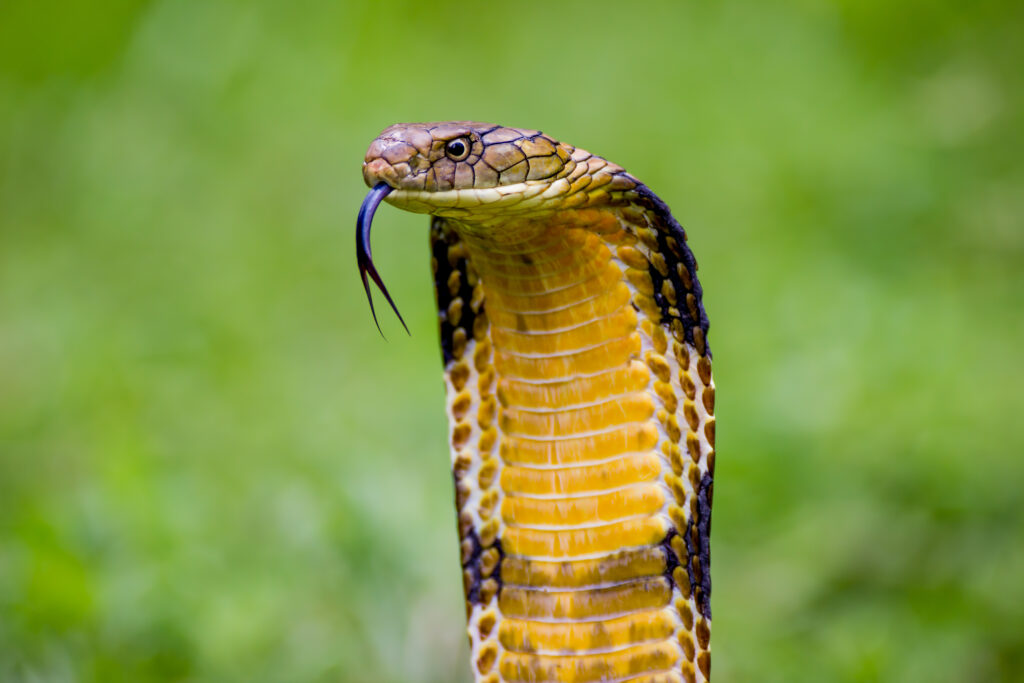King Cobra
*This page is under renovation and all information may not be up-to-date or complete*
Description
King cobras are the largest venomous snakes in the world.
Adult of this species are yellow, green, brown, or black in color. They also usually have yellow or white crossbars or chevrons. Their belly and throat are also yellow or cream-colored. Juveniles are black with yellow or white crossbars on their body and tail, with four similar crossbars on their head.
King cobras’ fangs are almost 0.5 inches (8-10 millimeters long). Since their fangs are fixed to their upper jaw, they have to be short or they would puncture their own mouths.
Range & Habitat
King cobras are native to forest, shrubland, grassland, and wetlands in Southeast Asia.
At the Virginia Zoo, you can see our king cobra in the World of Reptiles.
Behavior
King cobras are active during the day and have excellent eyesight. In fact, they can see a moving person almost 330 feet away!
To see over bushes and tall grasses, king cobras stretch their body into an upright position. When a cobra feels threatened, they assume the same upright posture used to see over grasses, but they also hiss and use special muscles and ribs in their neck to form a hood. The hood makes the snake appear larger and is used to help scare predators away.
Diet
King cobras primarily eat other types of snakes, including Asian rat snakes, dhamans, Indian cobras, kraits, and pythons up to 10 feet in length. They may even eat king cobras smaller than themselves. Some individuals have strong preferences for a particular species of prey and will refuse to eat any others.
Conservation
Habitat loss and death from human-animal interactions are the major threats to this species.
Fun Facts
- The neurotoxin in a single bite from this species is enough to kill 20 humans or even an elephant!
Virginia Zoo Animals
Female: Clarice

Scientific Name
Ophiophagus hannah
IUCN Conservation Status
Vulnerable
Size
Length: Averages 10-12 feet, but may reach 18 feet
Life Expectancy
20 years in the wild, or longer in human care